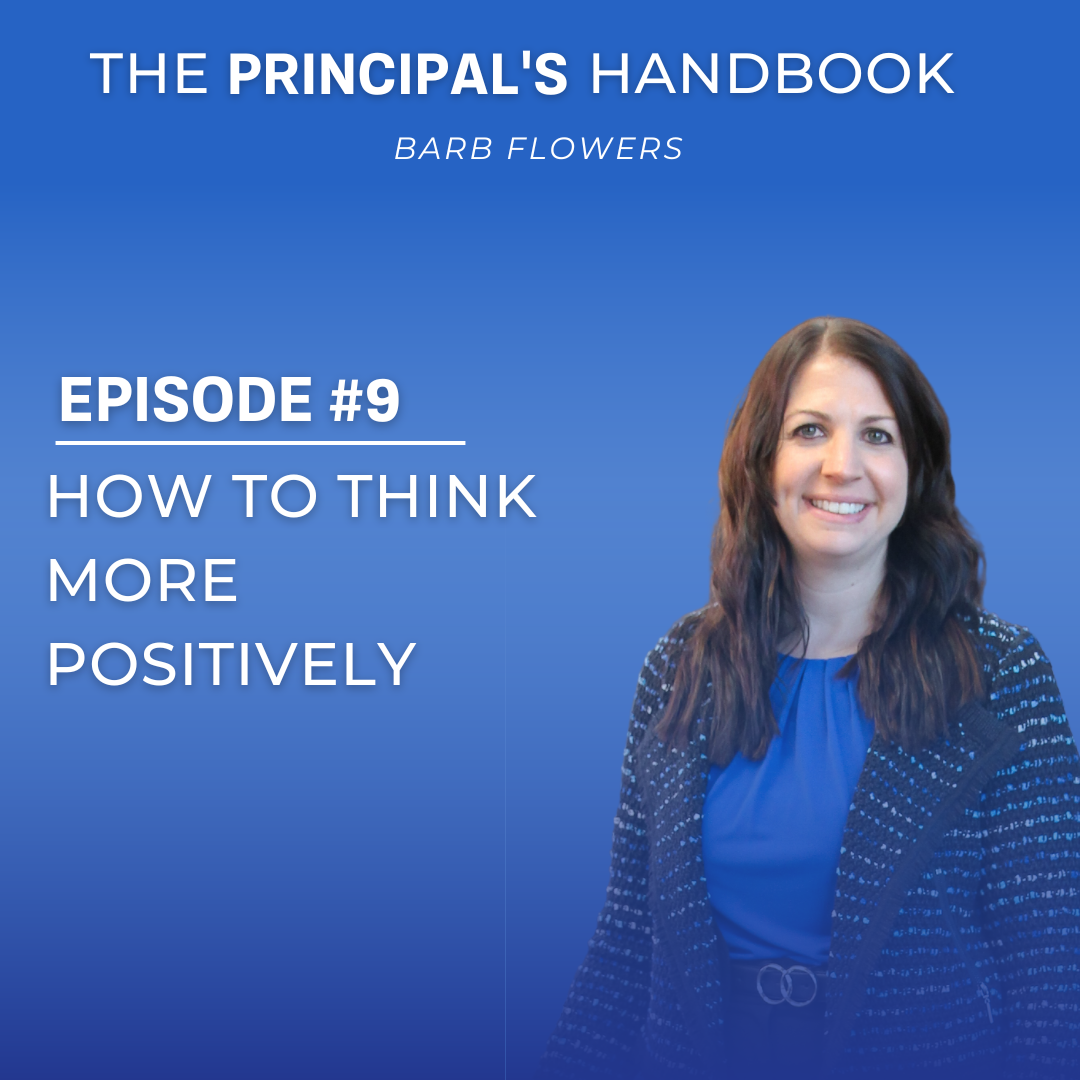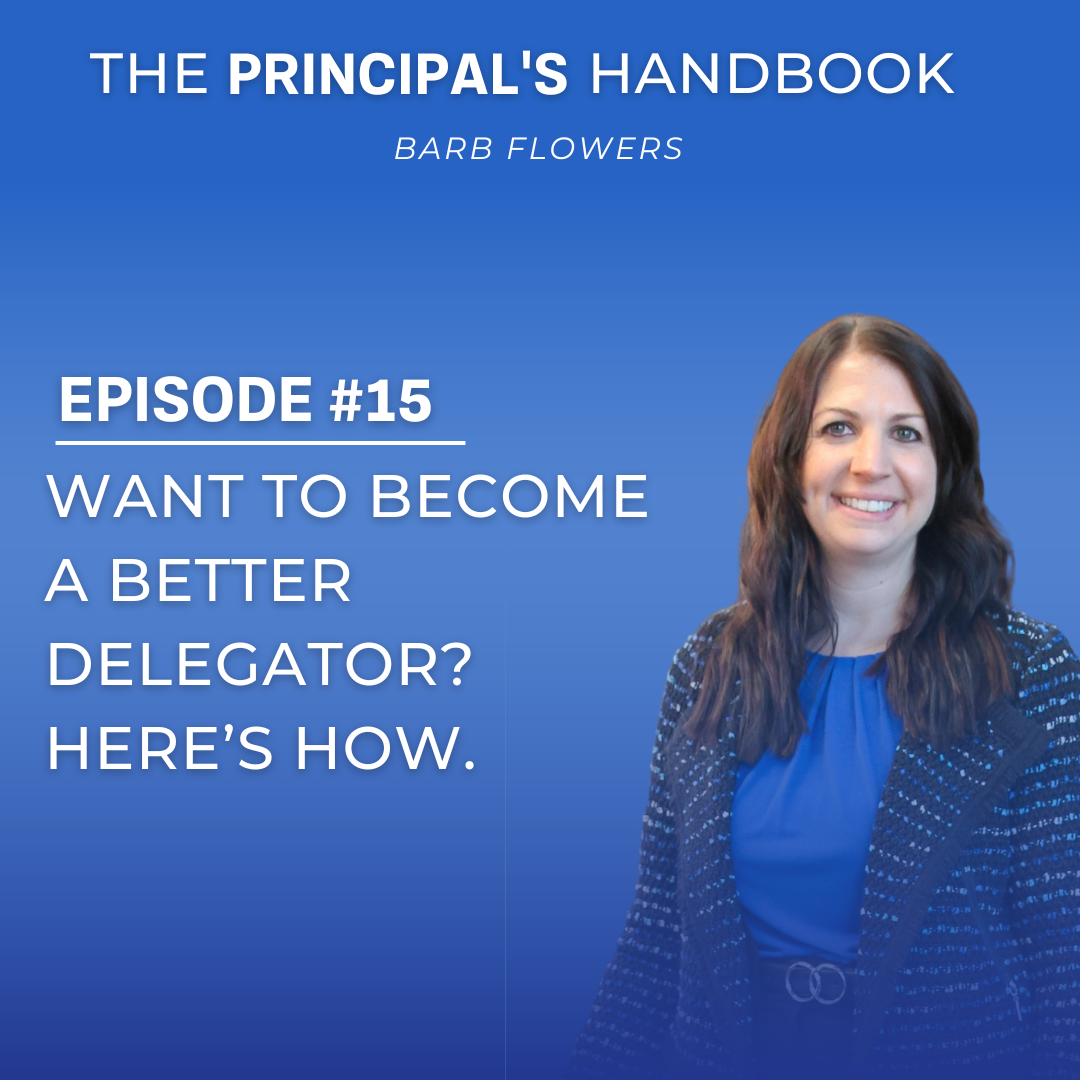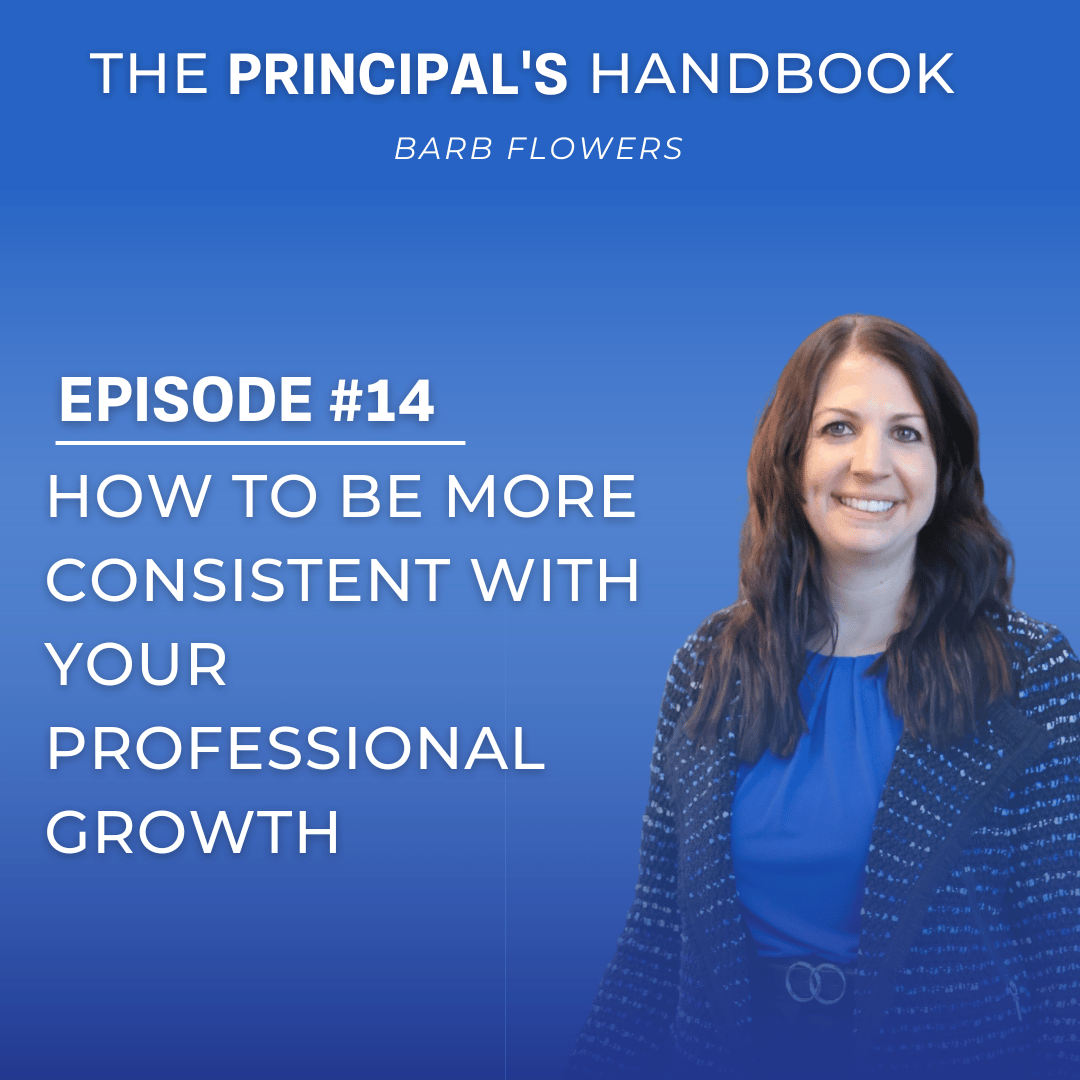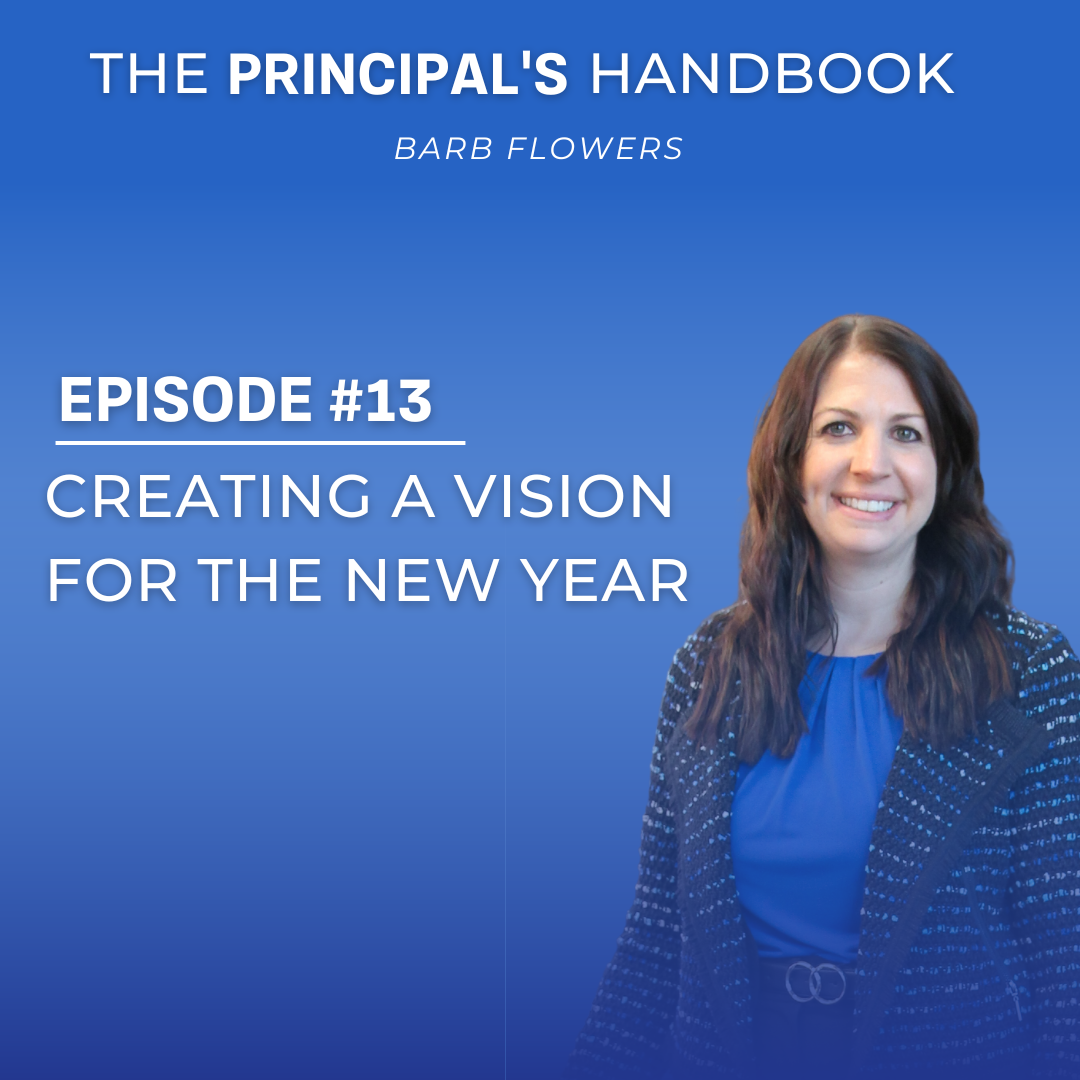Welcome to The Principal’s Handbook!
I’m Barb Flowers, a certified life coach and former elementary principal with eight years of leadership experience.
This is your go-to resource for revamping your leadership approach and prioritizing self-care.
Each week, we’ll explore strategies for boosting mental resilience, managing time effectively, and nurturing overall wellness.
We’ll tackle daily challenges and work-life balance—because your well-being matters.
Today’s Topic: How to Think More Positively
Hey, everyone!
Today, we’re diving into the power of positive thinking—and how it can literally change your life. I’m not just saying that—I’ve been intentionally working on reframing my thoughts for about a year now, and it’s been transformational.
But let’s be real: it’s easy to stay positive when things are going well.
It’s much harder in the middle of chaos, especially for school leaders facing daily challenges. So today, I’m sharing why our brains lean negative—and practical tips to shift into a more positive mindset.
Why Is Positive Thinking So Hard?
Our brains are wired for negativity.
Thousands of years ago, humans needed a negativity bias to stay safe from threats. But today, that bias often creates unnecessary anxiety and stress.
Negative thinking doesn’t just impact our mental health—it also affects our physical health.
It’s linked to higher risks of depression, anxiety, degenerative brain diseases, cardiovascular problems, digestive issues, weakened immune systems, and disrupted hormone regulation.
In short, negativity can make us sick.
In leadership, negative thoughts can make us feel unmotivated, stuck, and disconnected—dragging down morale across an entire building.
The good news?
Thanks to neuroplasticity, our brains can rewire and create new pathways to support more positive thinking!
Quick Break: Why IXL Stands Out
One of my biggest frustrations with EdTech is the overwhelming number of tools—and not knowing which ones actually work.
IXL is different. It consolidates the functions of dozens of tools and delivers proven results.
Studies across 45 states show IXL schools outperform non-IXL schools on state assessments, and research from Johns Hopkins confirms that IXL meets ESSA Tier 1 standards.
Visit ixl.com/be for a demo.
The Benefits of Positive Thinking
Positive thinking helps you:
Think about it:
When you walk into work with a positive mindset, you’re more productive and engaged.
Compare that to how you feel the day before a holiday break—when negativity and exhaustion make even simple tasks feel overwhelming.
Tips for Thinking More Positively
1. Notice Your Negative Thoughts
Awareness is the first step.
Start paying attention to your internal dialogue. Be curious, not judgmental.
Ask yourself:
You’ll be amazed—once you notice your own negativity, you’ll also spot it everywhere around you.
2. Reframe Negative Thoughts
Take a negative thought and shift it into something more neutral or positive.
Remember:
For example, if you dread interacting with a difficult parent, reframing your thought to “I’m capable of managing challenging conversations” can lead to a calmer, more productive meeting.
This isn’t about toxic positivity. It’s about intentional, realistic reframing.
3. Practice Daily Gratitude
Gratitude shifts your focus from what’s lacking to what’s abundant.
Simple strategies:
-
Name three things you’re grateful for before getting out of bed.
-
List three things you’re grateful for when you walk into school.
-
Reflect on three wins at the end of the day.
Gratitude rewires your brain toward positivity—and it’s contagious among staff and students!
4. Surround Yourself with Positivity
-
Spend time with positive colleagues.
-
Listen to uplifting podcasts and music.
-
Be mindful of the media you consume.
Negative thinking is contagious—but so is positive thinking.
5. Use Positive Affirmations
Create simple statements that reinforce your strengths and goals, such as:
Say them daily—especially when facing tough situations.
6. Celebrate Small Wins
Recognize tiny victories, like a successful parent call or a productive team meeting.
Celebrating even the small stuff builds momentum and positivity.
Pro tip: Start staff meetings by sharing celebrations! It models gratitude and fosters a positive culture.
7. Set Realistic Goals
Unrealistic expectations breed negativity.
Break large goals into smaller, achievable steps.
This builds a sense of accomplishment and fuels forward momentum.
8. Encourage a Positive School Culture
You set the tone for your building’s culture.
-
Foster kindness, collaboration, and open communication.
-
Welcome feedback without defensiveness.
-
Recognize that modeling positivity encourages others to do the same.
9. Practice Mindfulness
Mindfulness practices—like meditation, deep breathing, or reflective walks—help you stay centered and reduce stress.
They also sharpen your attention, making it easier to focus and respond thoughtfully rather than react impulsively.
Ideas:
10. Learn from Challenges
Shift your perspective:
Every challenge is an opportunity for growth.
Mistakes and setbacks aren’t failures—they’re lessons in disguise.
Remember, we often tell students that mistakes help them learn. We need to give ourselves that same grace.
Final Thoughts
As a principal, your mindset matters more than you realize.
Positivity isn’t just good for you—it’s contagious. It uplifts your staff, your students, and your whole building.
Talk about positivity. Model it. Celebrate it.
You are the energy of your school.
If you’re interested in learning more about reframing thoughts or building a positive leadership mindset, I’d love to connect with you!
Thank you for tuning into The Principal’s Handbook!
If you try any of these strategies, I’d love to hear about it. Reach out and share what’s working for you!






